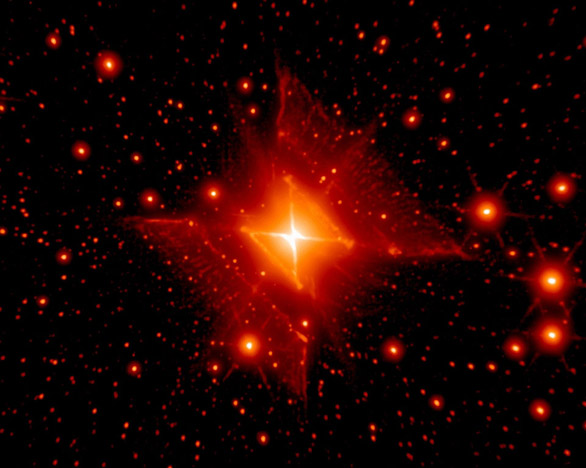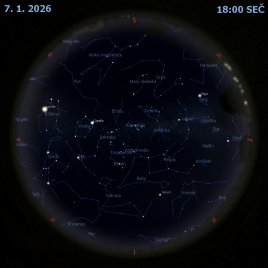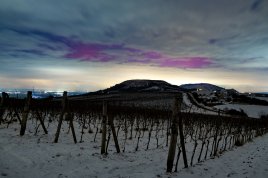MWC 922: Mlhovina Červený čtverec

Uznání a copyright: Peter Tuthill (Sydney U.) & James Lloyd (Cornell)
Co může způsobit, aby mlhovina vypadala jako čtverec? Nikdo pořádně neví. Je patrné, že žhavá hvězdná soustava MWC 922 je uvnitř mlhoviny právě takového tvaru. Obrázek nahoře kombinuje infračervené expozice z Halova dalekohledu na Mt. Palomaru v Kalifornii a z dalekohledu Keck-2 na Mauna Kea na Havaji. Dosud nejlepší hypotéza čvercové mlhoviny předpokládá, že centrální hvězda nebo hvězdy nějak v posledním vývojovém stupni vyvrhují kužele plynu. V případě MWC 922 tyto kužely mají skoro pravé úhly a jsou pozorovány ze stran. K podpůrným důkazům kuželové hypotézy patří radiální paprsky na snímku, které probíhají podél stěn kužele. Badatelé spekulují, že kužely by při pozorování z jiného úhlu vypadaly jako obří prstence kolem supernovy 1987A a to možná naznačuje, že hvězda v MWC 922 by možná jednoho dne mohla vybuchnout jako podobná supernova.
NASA Official: Phillip Newman Specific rights apply. NASA Web Privacy Policy and Important Notices
A service of: ASD at NASA / GSFC & Michigan Tech. U.
Odkaz na originální APOD


